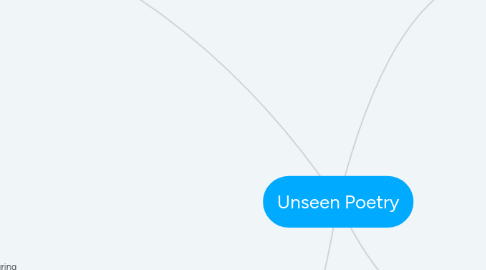Unseen Poetry
by Helena Perry

1. Post 1900
1.1. 1910
1.1.1. 1920
1.1.1.1. 1930
1.1.1.1.1. 1940
1.1.1.1.2. Objectivist poets - A loosely affiliated group of American poets writing in the 1930s and '40s. Harriet Monroe famously solicited an edition of Objectivist work for Poetry, guest-edited by Louis Zukofsky, which featured work by many of the poets later associated with the movement. The Objectivist poets, as described by Zukofsky, were influenced by the writing of Ezra Pound and took many cues from the earlier Imagists: both groups wrote poetry that featured highly concentrated language and imagery and terse vers libre. The Objectivists, however, focused on everyday life and language, treating the poem as an object itself and emphasizing sincerity and the poet's clear vision of the world. Core Objectivist poets include Zukofsky, George Oppen, Carl Rakosi, Lorine Niedecker, Charles Reznikoff, and the British poet Basil Bunting. Browse Objectivist poets.
1.1.1.2. Surrealism -André Breton outlined its aims in his Surrealist Manifesto (1924), affirming the supremacy of the "disinterested play of thought" and the "omnipotence of dreams" rather than reason and logic. Freudian psychoanalysis and its emphasis on the power of unconscious thought. Through "automatic writing" and hypnosis, artists could free their imaginations to reveal deeper truths. The French poets Charles Baudelaire, Arthur Rimbaud, Guillaume Apollinaire, and Pierre Reverdy embodied early surrealist principles, as did Peruvian poet César Vallejo.
1.1.2. Modernism - A broadly defined multinational cultural movement (or series of movements) that took hold in the late 19th century and reached its most radical peak on the eve of World War I. It grew out of the philosophical, scientific, political, and ideological shifts that followed the Industrial Revolution, up to World War I and its aftermath. For artists and writers, the Modernist project was a re-evaluation of the assumptions and aesthetic values of their predecessors. It evolved from the Romantic rejection of Enlightenment positivism and faith in reason. Modernist writers broke with Romantic pieties and clichés (such as the notion of the Sublime) and became self-consciously skeptical of language and its claims on coherence. In the early 20th century, novelists such as Henry James and Virginia Woolf (and, later, Joseph Conrad) experimented with shifts in time and narrative points of view. While living in Paris before the war, Gertrude Stein explored the possibilities of creating literary works that broke with conventional syntactical and referential practices. Ezra Pound vowed to "make it new" and "break the pentameter," while T.S. Eliot wrote The Waste Land in the shadow of World War I. Shortly after The Waste Land was published in 1922, it became the archetypical Modernist text, rife with allusions, linguistic fragments, and mixed registers and languages.
2. Victorian Era
2.1. Victorian - Poetry written in England during the reign of Queen Victoria (1837-1901) may be referred to as Victorian poetry. Following Romanticism, Victorian poets continued many of the previous era's main themes, such as religious skepticism and valorization of the artist as genius; but Victorian poets also developed a distinct sensibility. The writers of this period are known for their interest in verbal embellishment, mystical interrogation, brooding skepticism, and whimsical nonsense. The most prolific and well-regarded poets of the age included Alfred, Lord Tennyson, Robert Browning, Elizabeth Barrett Browning, Matthew Arnold, Gerard Manley Hopkins, and Oscar Wilde. Browse more Victorian poets.
2.2. Transcendentalism - A strain of Romanticism that took root among writers in mid-19th-century New England. Ralph Waldo Emerson laid out its principles in his 1836 manifesto Nature, in which he asserted that the natural and material world exists to reveal universal meaning to the individual soul via one's subjective experiences. He promoted the poet's role as seer, a "transparent eyeball" that received insight intuitively through his or her perception of nature. Henry David Thoreau was an early disciple of Emerson's philosophy.
2.3. Romanticism - A poetic movement of the late 18th and early 19th centuries that turned toward nature and the interior world of feeling, in opposition to the mannered formalism and disciplined scientific inquiry of the Enlightenment era that preceded it. English poets such as William Wordsworth, Samuel Taylor Coleridge, John Keats, Percy Bysshe Shelley, and Lord Byron produced work that expressed spontaneous feelings, found parallels to their own emotional lives in the natural world, and celebrated creativity rather than logic.
3. The Renaissance Era 1485-1660
3.1. Elizabethan Era - The period coinciding with the reign of England's Queen Elizabeth I (1558-1603), considered to be the literary height of the English Renaissance. Poets and dramatists drew inspiration from Italian forms and genres such as the love sonnet, the pastoral, and the allegorical epic. Musicality, verbal sophistication, and romantic exuberance dominated the era's verse. Defining works include Edmund Spenser's The Shephearde's Calendar and The Faerie Queene, the sonnets of Sir Philip Sidney and William Shakespeare, and Sir Walter Raleigh's lyrics. Drama especially flourished during this time; see the comedies and tragedies of William Shakespeare, Ben Jonson, and Christopher Marlowe.
4. Neoclassical Period 1660-1798
4.1. Metaphysical Poets - A group of 17th-century poets whose works are marked by philosophical exploration, colloquial diction, ingenious conceits, irony, and metrically flexible lines. Topics of interest often included love, religion, and morality, which the metaphysical poets considered through unusual comparisons, frequently employing unexpected similes and metaphors in displays of wit. The inclusion of contemporary scientific advancements were also typical. John Donne is the foremost figure, along with George Herbert, Andrew Marvell, Abraham Cowley, Richard Crashaw, and Henry Vaughan. For more on metaphysical poetry, see Stephen Burt's poem guide on John Donne's "The Sun Rising."
4.2. Augustan Age The first half of the 18th century, during which English poets such as Alexander Pope and Jonathan Swift emulated Virgil, Ovid, and Horace—the great Latin poets of the reign of the Emperor Augustus (27 BCE to 14 CE). Like the classical poets who inspired them, the English Augustan writers engaged the political and philosophical ideas of their day through urbane, often satirical verse.

